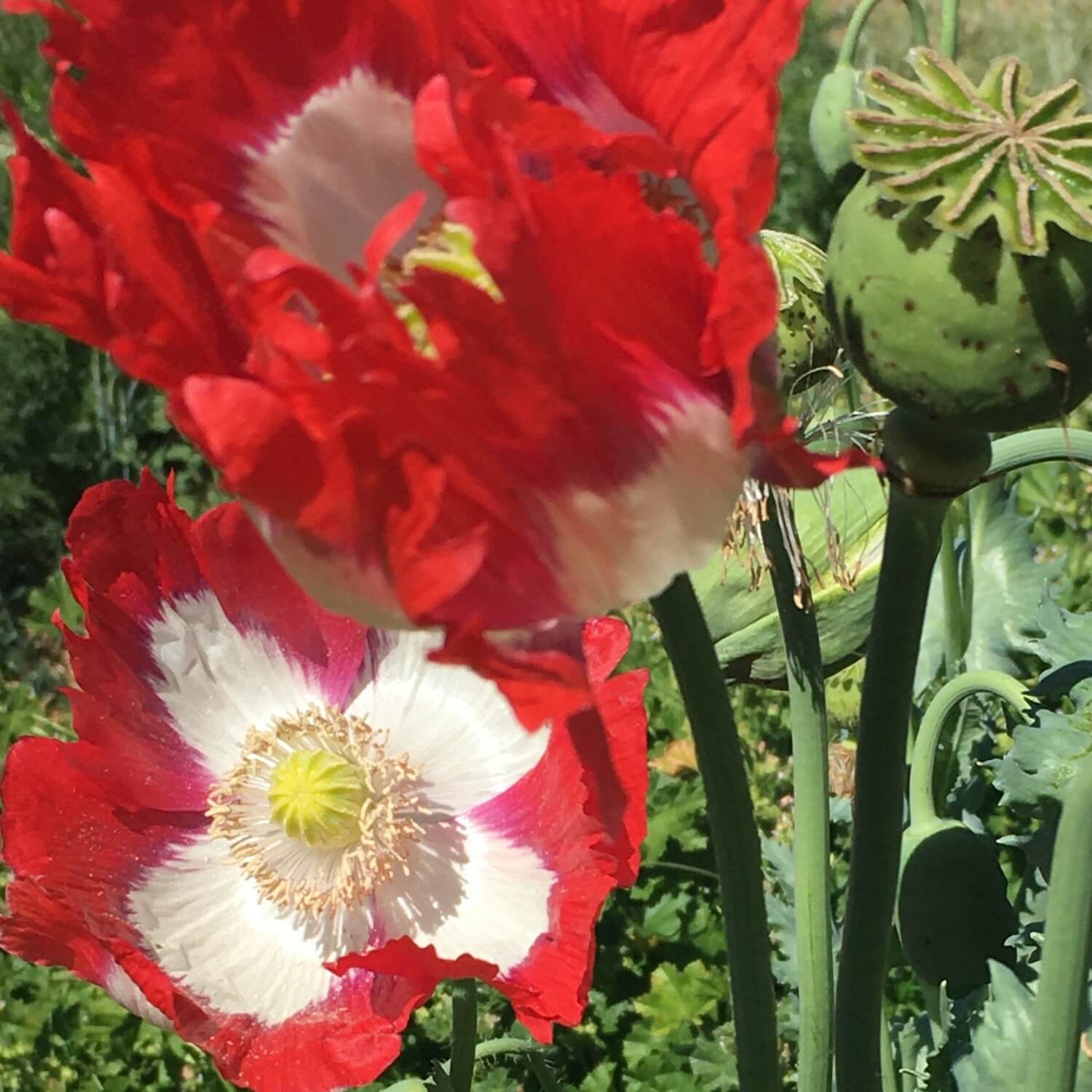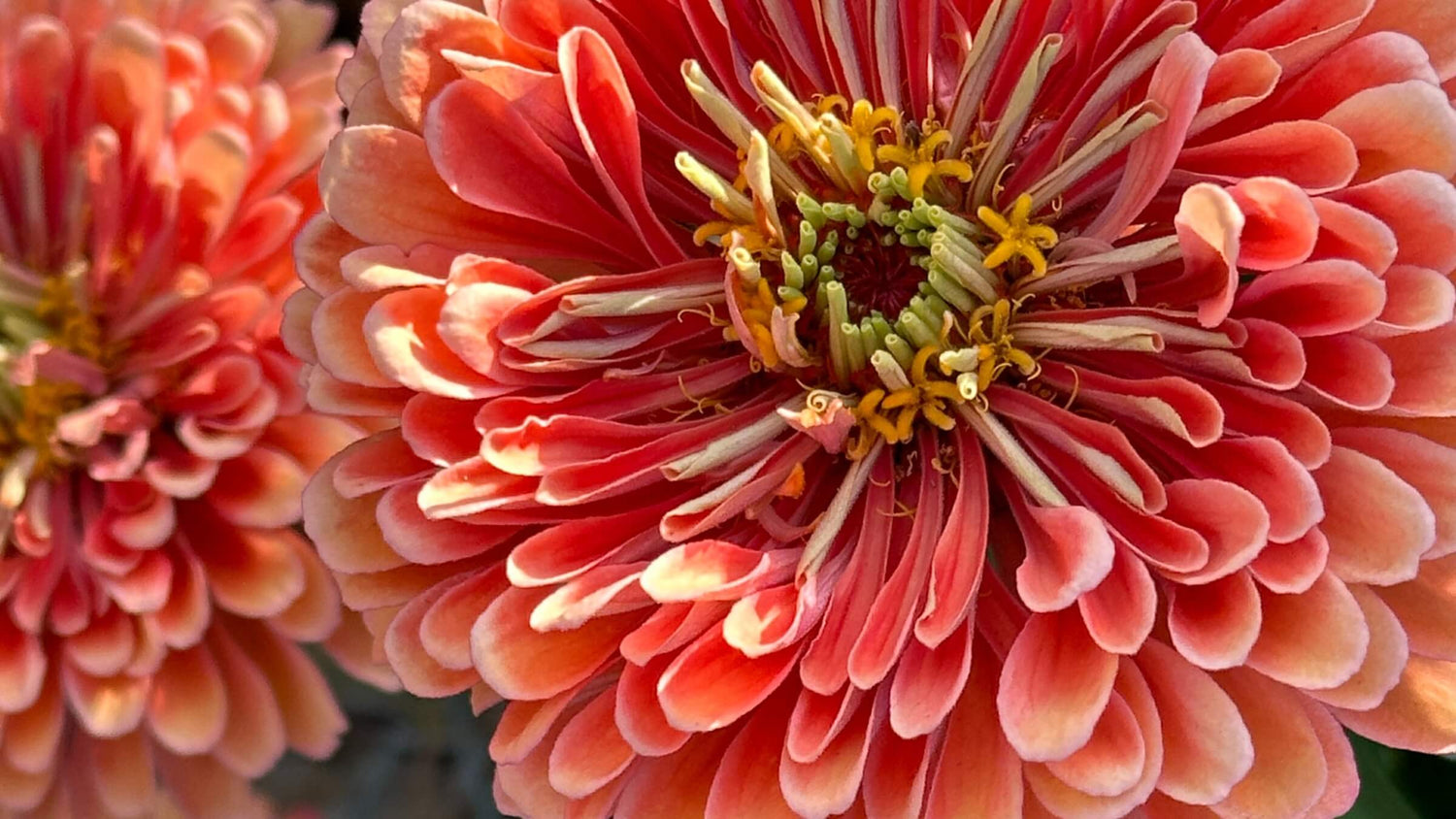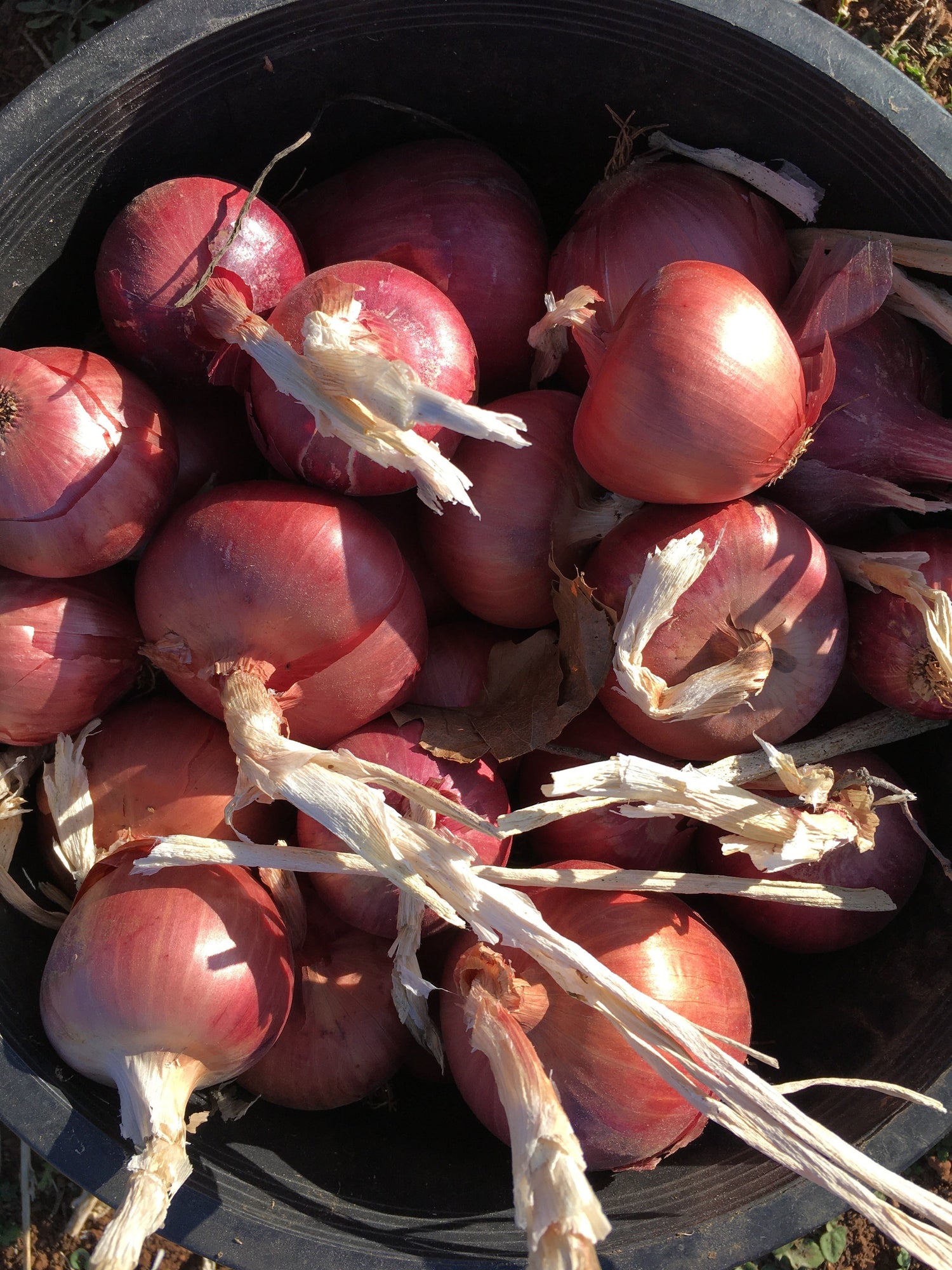Big Max Pumpkin:

If you are interested in entering a giant pumpkin contest this is a good variety to try. We were going for good seed production so isolation distances for purity were our main concern. If you want to grow a big'un, do a quick google search and you'll find plenty of advice from feeding it milk to setting up sun shade to stop sun scald.
We've grown these a few times in the past but never managed to harvest enough seed to offer. This year, our local seed grower and friends at Meyerhof Farm grew these for us on contract and and produced 5.5 lbs of organic seed from about 24 large pumpkins.
Their pumpkin patch was pretty epic. The transplants were given plenty of spacing, manure and water to sprawl and spread. My kids were out there at the beginning of October marking which pumpkin would be theirs to carve for Halloween. We definitely had to roll the pumpkins and lift them, with our legs, into a wheel barrow to remove from the field.
The large seeds can be roasted and the flesh is edible though not as rich and tasty as smaller varieties like Winter Luxury pumpkin. I like to start squash about 3 weeks before transplanting. For us, we aim to transplant squash around the last week of May. If you are aiming for a giant then you could start your seeds in a 4-6 inch pot a little earlier, 4 weeks before, to get a jump on the season.
These will also do great directly sown into your pumpkin patch. Give them plenty of space to grow, lots of water and compost and you'll have kids flocking to your pumpkin patch come October:)
Chocolate Cake Sweet Pepper:

Last year I did some crowd sourcing from this list to see what varieties you all thought we should grow. A few folks mentioned chocolate peppers. Honestly, the name got me so I started searching for one that looked good and found this variety from one of my favorite seed companies, Fedco, and bred by Doug Jones of North Carolina.
As peppers are wont to do, they took their time reaching peak ripeness and really started to shine in Sept and Oct. The plants are incredibly compact and each can hold 10-15 large blocky peppers that are good to eat green and amazing when allowed to ripen fully into a chocolate bronze reddish color.
Here is what I wrote on our seed packet description.
Sweet as chocolate cake? Not quite but still incredibly scrumptious! These blocky bell peppers turn deep maroon when ripe and are sweet enough to snack on raw. The compact plants produce many fruits and are have an upright habit. In very hot and sunny climates shade cloth will help with even ripening and prevent scalding.
I plan to grow these again for seed in 2024, and hopefully in a larger quantity. Due to garden symphylans in our main field our yield was down and we only ended up with about 2.5 oz of seed from around 20 plants. What we did get, were so good that I removed the seed by hand, pepper by pepper, so we could eat them too!
For seed saving, most sweet peppers are Capsicum annuum and need to be isolated from other C. annuum by about 300 ft to maintain purity. In a home garden set up you can grow other species of hot peppers like C. chinensis or C. fructescens without cross pollination.
I'm sure some of you have already started your pepper seeds, but if you haven't no need to worry. There is still a lot of time. Plus, peppers really don't love the extreme summer heat in northern CA and in my experience will often not yield well until late summer or early fall anyways.
We ate a lot of these peppers raw, roasted and stuffed. The left overs were sliced and frozen for winter.






